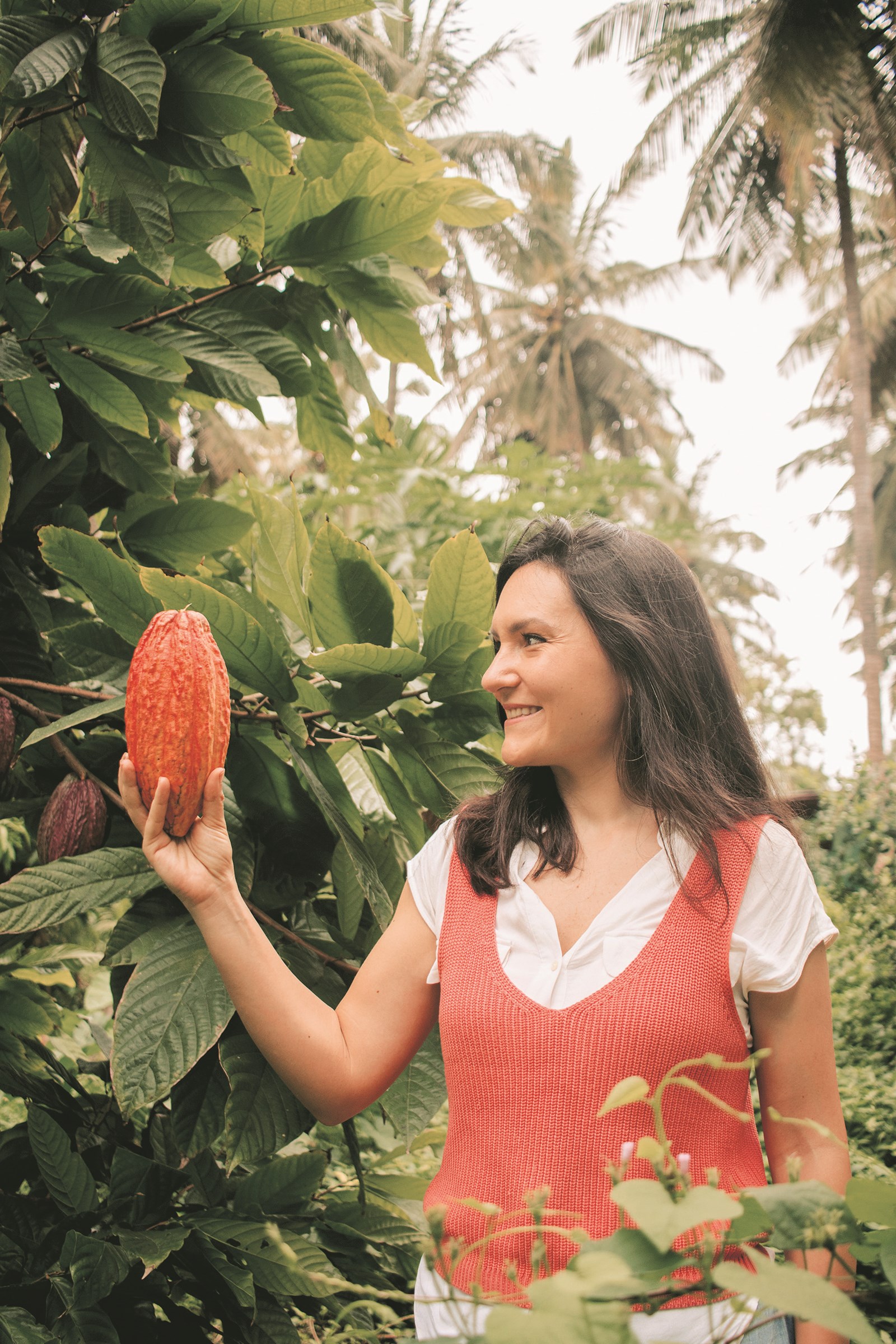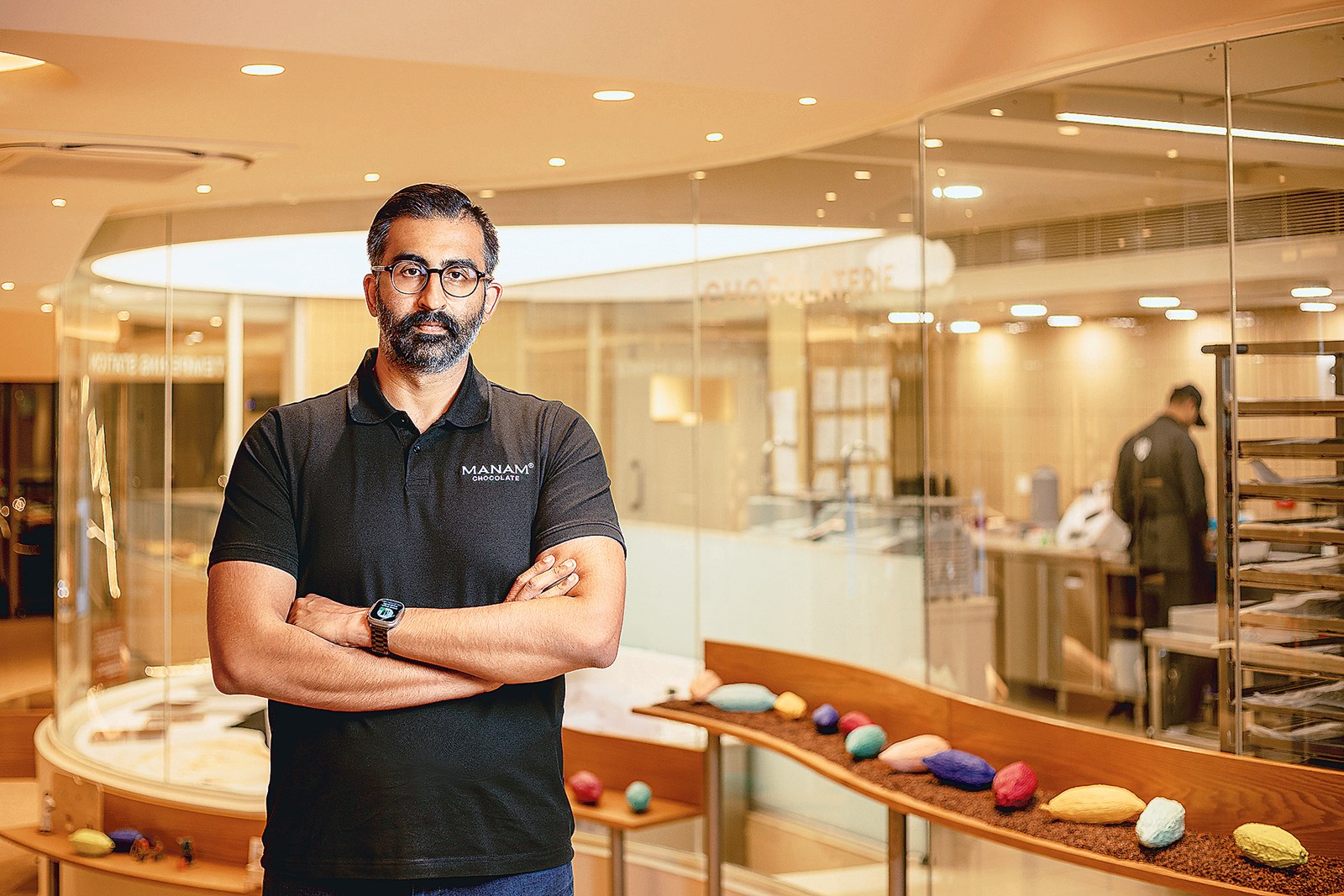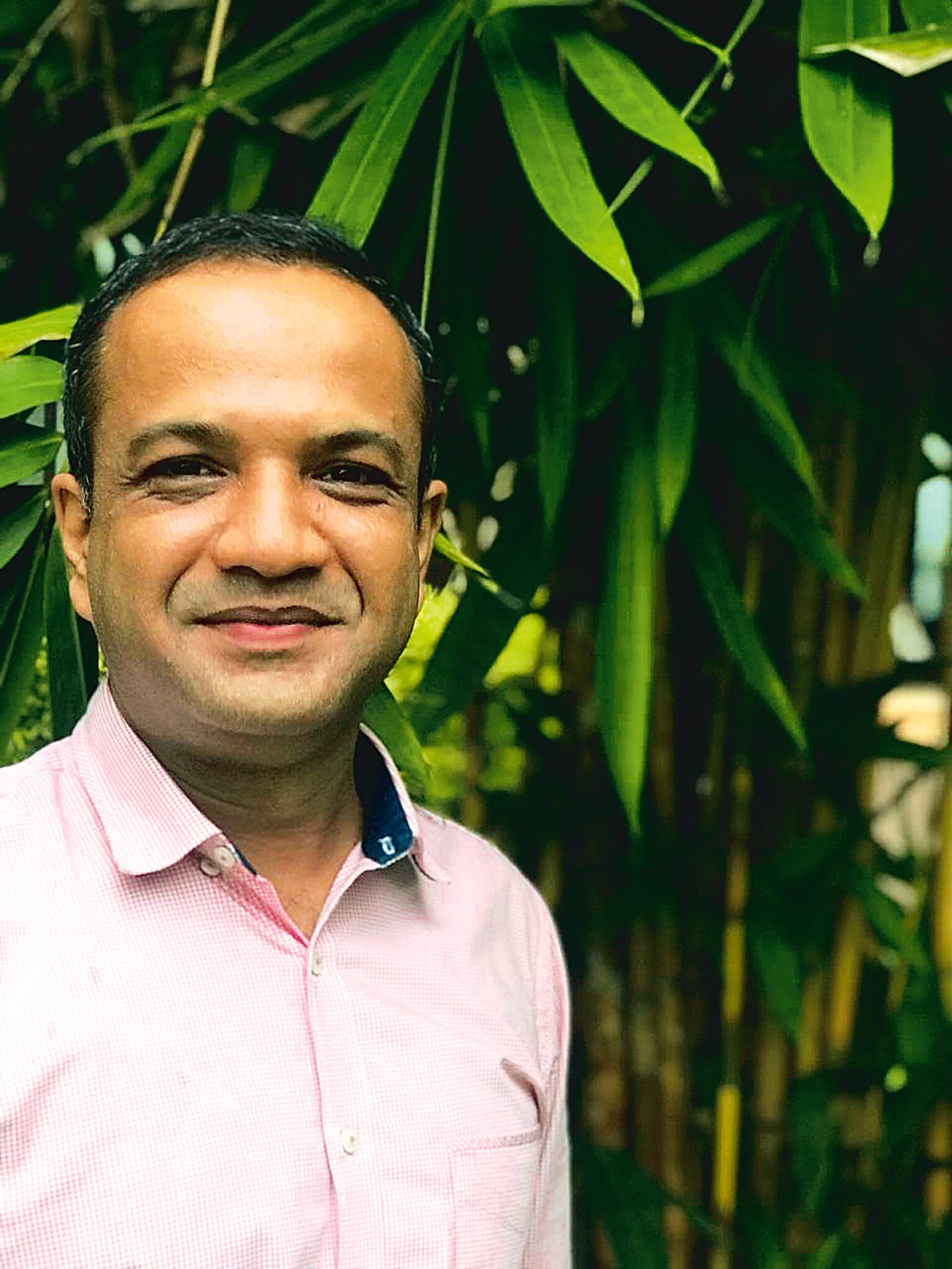When Chaitanya Muppala got to run the family-owned Almond House, a leading mithai store in Hyderabad, he was quick to notice the shift in gifting preferences from tradition to modernity in the Old City. That’s why he launched Manam Chocolate this August, artisanal, boutique and carefully curated as an uber-cool indulgence. Following a colonial legacy with factory-made settings, it took him a while to understand that a good chocolate was much like wine-making, growing and nurturing the beans with the right soil, climate and technique. Like the best Pinot Noir, it could have spicy and supple notes.
And there was as much a mathematical method to the madness of swirling flavours.
Going through the history of the Theobroma cacao bean, Muppala found that though cacao had been brewed as a beverage — what we call drinking chocolate — for long, the history of chocolate was barely 200 years old. “Solid chocolate only happened in 1828 when Dutch chemist Conrad van Houten invented the process of separation of cacao butter from roasted cacao beans,” he says, adding how it was primarily developed for soldiers fighting the two world wars. The first solid commercial chocolate bars were made by JS Fry & Sons in Bristol in 1847, followed by John Cadbury in Birmingham in 1849. “Considering we were colonised by Britain, one can safely assume that chocolate came to India soon afterwards,” adds Muppala.
As the war meant rationing beans, over time Cadbury in India continued with that formula. Imitating it, other chocolate brands became synonymous with high sugar, vegetable fat and only a small quantity of cacao.
 Patricia Cosma
Patricia Cosma
When Cadbury came to India in 1948 with its dairy milk bars, it got to work with the eight plantations set up by Britishers in Tamil Nadu in 1798. According to the Journal of Plantation Crops, these plantations grew criollo, a refined variety of cacao. However, cacao cultivation gained momentum only in the mid-1960s when Cadbury established a research-cum-demonstration unit at Wayanad, Kerala. Later a cacao research centre was established at Kerala Agricultural University in 1979 with the assistance of the World Bank. When funds dried up, the university tied up with Cadbury and established the Cadbury-KAU Co-operative Cocoa Research Project (CCRP) in 1987. Subsequently, commercial cultivation of cacao expanded to the southern states of Kerala, Tamil Nadu, Andhra Pradesh and Karnataka. “However, nobody thought of optimising cacao for flavour and complexity and treated it for industrial use in terms of yield and disease resistance,” says Muppala.
Now Indian craft chocolatiers, like many Willy Wonkas, are going back to the farm, to make chocolate the way it should be than what has been, going from pesticide-free soil to employing the right technique at every step. With his brand Distinct Origins, Muppala is invested in identifying unique varietals of cacao from different parts of the world and setting up experimental gardens in India to find which one of them would work best here. He’s set up an experiential store, Karkhana, in Hyderabad’s Jubilee Hills where he is encouraging people to understand the process of chocolate-making and open a world of confectionery beyond the most popular form of bars. He has 250 products — chocolate bars, bonbons, truffles, nama, barks, fudge, palettes, rochers, clusters, macarons, gianduja, spreads, cakes, pastries and hot and cold beverages.
 Chaitanya Muppala
Chaitanya Muppala
Pollachi-based Karthikeyan Palaniswamy joined hands with his brother-in-law Harish Manoj Kumar in 2015 to launch a tree-to-bar chocolate brand called Soklet. They grow cocoa beans at Kumar’s 150-acre farmland, nestled in the folds of the Annamalai Hills. “We don’t use any pesticides or fungicides and manage our farms using aquaculture and permaculture, ensuring that the trees get the best nutrition. We also invest in R&D to help our farmers understand the right way to plant and harvest a pod,” says Palaniswamy, who grows a mix of amelanado, trinitario and criollo varietals. Every year, he and his partner select the best trees for their breeding programme to cater to their increasing acreage and demand for cacao beans.

Fermentation and drying are two crucial steps of the post-harvest process that determine the quality of cacao. “Since most farmers get a flat price for the beans, they aren’t invested in these processes and even dry the beans on the ground,” says Palaniswamy. Once harvested, the beans undergo a slow fermentation process, which takes anywhere between seven and nine days. “We set up special beds for drying and turn the beans everyday to ensure they dry out evenly,” he adds. That Indian chocolatiers can be equally adept at producing high quality beans was proven in 2017, when Soklet received the International Cocoa Award at the Salon Du Chocolat, Paris, for producing one of the top 18 samples. While Soklet is known for its “Indian origin” chocolate bars with 70 to 100 per cent dark chocolate, gourmet bakes and drinking chocolate, it also makes its beans available for others to use.
Kerala-based Vikas Temani, the founder of the farm-to-bar chocolate brand Paul and Mike, who planted cacao plants in Kochi and Coimbatore in 2017 and 2018, has set up a small factory in Kochi. He even sources wet cocoa beans from progressive farmers in Andhra Pradesh. “These are not dried but have a wet pulp. Usually, chocolate makers buy dried beans in bulk but if we control processing from the pulp stage, we can get a consistent flavour profile,” says Temani. That approach has worked as Paul and Mike clinched two spots among the top 25 chocolates in the world at the International Chocolate Awards World Finals last month. While the jury adjudged their Gin and Ginger dark chocolate as the ninth best chocolate, Sichuan Pepper And Orange Peel dark chocolate secured the 23rd spot.
 Vikas Temani
Vikas Temani
Muppala spent two years in West Godavari interacting with farmers to understand plant genetics and the terroir that would work for cacao. He believes in “absolving the farmer of the cost and effort of having to do anything beyond tending to their trees and crops, thus allowing them to make a significant premium.”
Some chocolate companies are also determined to champion artisanal methods and distinctive Indian flavouring. Mahabaleshwar-based Karan Tejani of Ziaho sources beans from South India but treats them at his facility in Mahabaleshwar with indigenous ingredients. The result is a range of interesting home-grown flavours, from gooseberry and banana to strawberry and apple. What’s also interesting is that each ingredient is highlighted on the package using the script of the land it is sourced from. So while strawberry sourced from Mahabaleshwar is written in Devnagri, apple sourced from Srinagar is tagged in Urdu and almonds sourced from Andhra Pradesh are described in Telugu. Tejani, who also runs a cafe between Panchghani and Mahabaleshwar called Cafe Cocoano, is using his chocolates to create a variety of desserts, from cheesecake to chocolate tart.
Hand-crafted chocolate is now inspiring chefs like La Folie’s Sanjana Patel to use it as a mother ingredient in all her creations, from macarons to tea cakes. “When I returned to India a decade ago, it was a challenge to explain to people the difference between couverture chocolate — which has a finer texture and a higher portion of cocoa butter — and industrial chocolate,” she says. Now she works directly with farmers, having set up her chocolate factory at Mahalaxmi, Mumbai, in 2019. And with the market for craft chocolates melting into our hearts, the farmers are benefitting too. “Better beans mean better remuneration, which is improving their livelihood,” shares bean-to-bar chocolate consultant and founder of the Indian Cacao and Craft Chocolate Festival, Patricia Cosma, who came to India in 2018 and has been working closely with farmers. Muppala has introduced digital payments so that the farmers get the amount directly and realise the virtues of growing quality batches of crop instead of bulk-producing for industry.
Although the craft chocolate industry has taken baby steps, it is looking at a double-digit growth. Of course, scaling up is a challenge. As Temani of Paul and Mike says, even transporting his products from Kochi to Delhi is risky because the chocolates are temperature-sensitive. “While Cadbury (owned by Mondelez International) has its own fleet of temperature-controlled trucks, boutique players have to send shipments by air. The logistic costs become a very big portion of our production cost.” But if we can wait for a trip to Switzerland to savour the perfect chocolate, it’s worth taking a trip down south instead.




